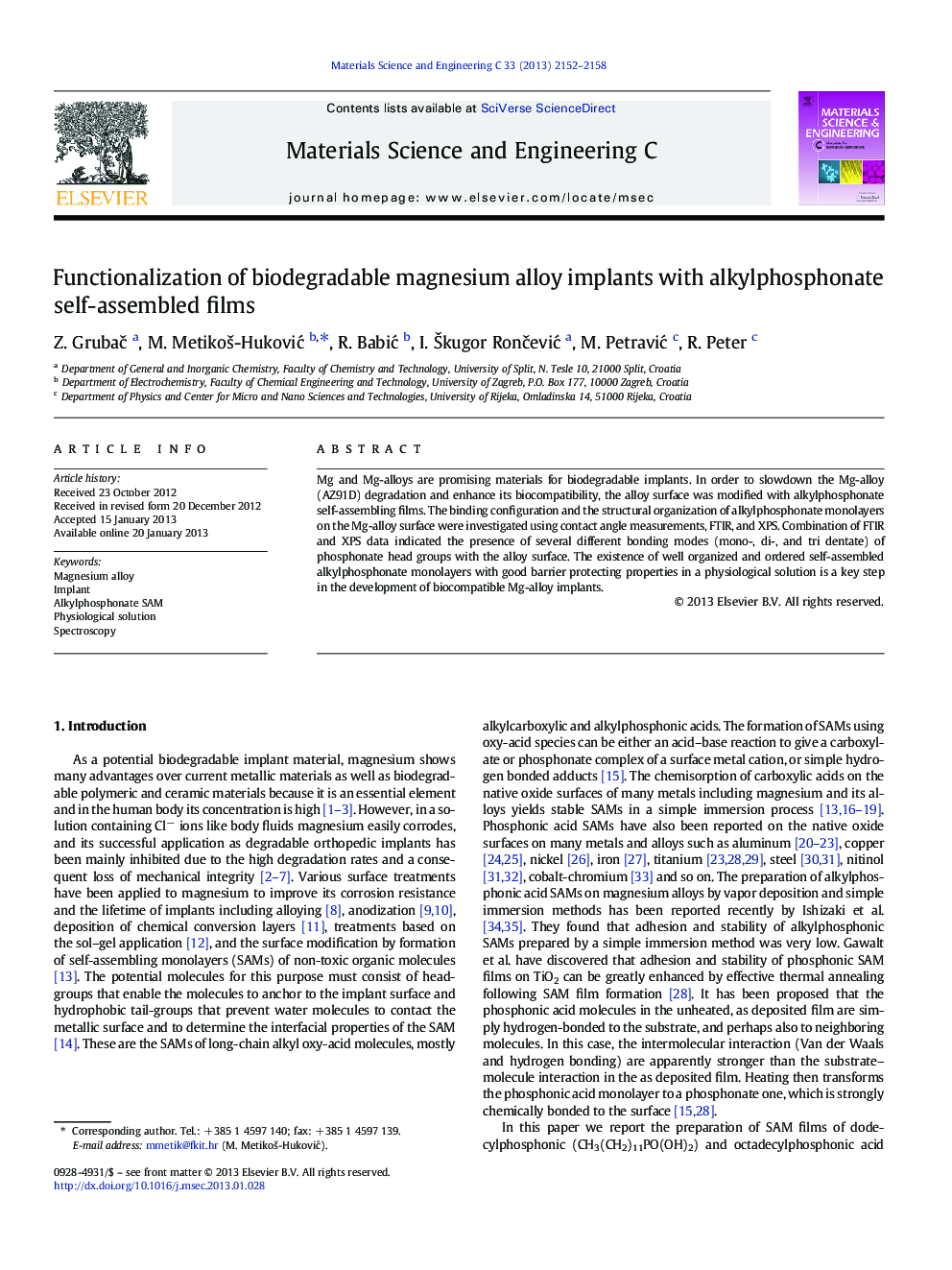| Article ID | Journal | Published Year | Pages | File Type |
|---|---|---|---|---|
| 1429420 | Materials Science and Engineering: C | 2013 | 7 Pages |
Mg and Mg-alloys are promising materials for biodegradable implants. In order to slowdown the Mg-alloy (AZ91D) degradation and enhance its biocompatibility, the alloy surface was modified with alkylphosphonate self-assembling films. The binding configuration and the structural organization of alkylphosphonate monolayers on the Mg-alloy surface were investigated using contact angle measurements, FTIR, and XPS. Combination of FTIR and XPS data indicated the presence of several different bonding modes (mono-, di-, and tri dentate) of phosphonate head groups with the alloy surface. The existence of well organized and ordered self-assembled alkylphosphonate monolayers with good barrier protecting properties in a physiological solution is a key step in the development of biocompatible Mg-alloy implants.
► Development of novel of biocompatible coatings for Mg-Alloy implants. ► Functionalization of biodegradable implant surface by alkylphosphonate SAMs. ► The binding mode and structural organization of SAMs are reviewed. ► Designed SAMs enhance the chemical stability of implants in physiological solutions.
